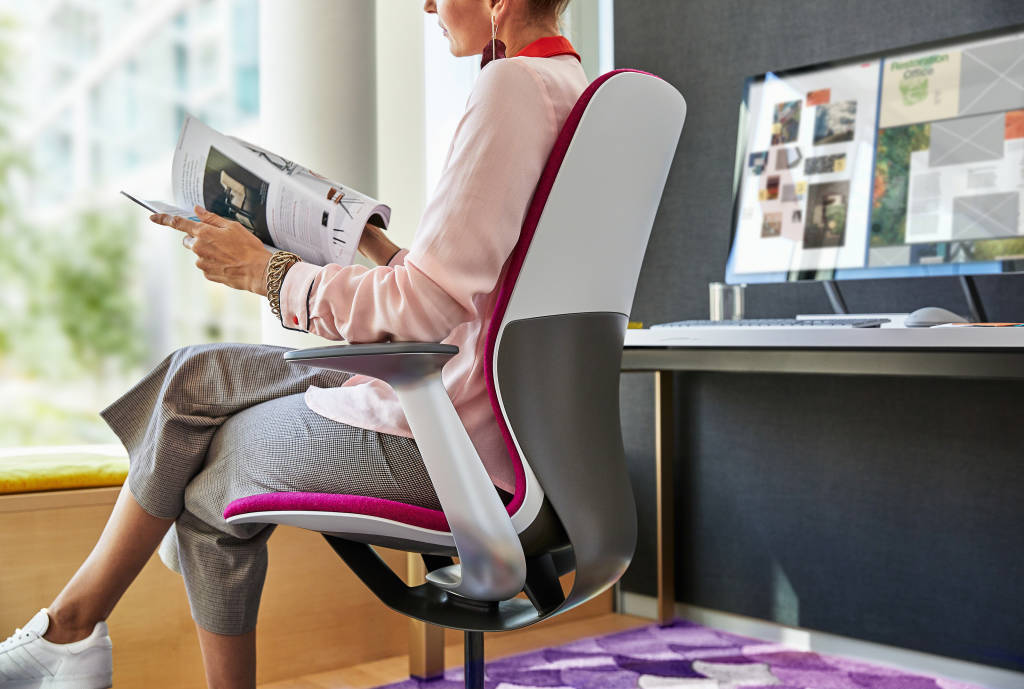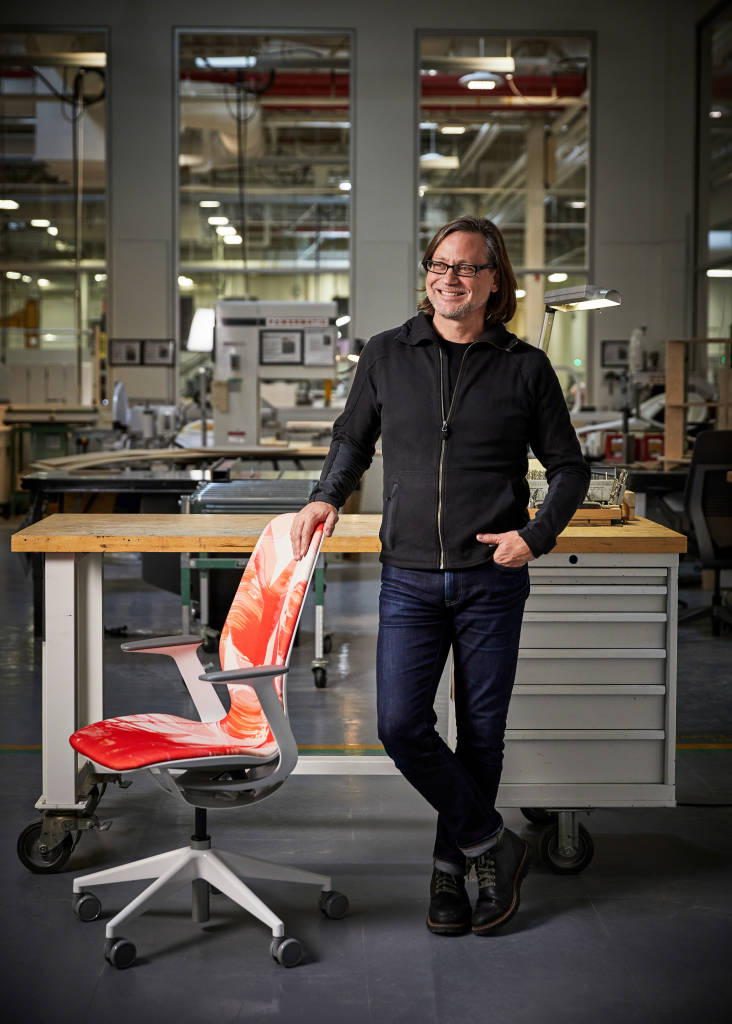A Chair That Moves the Way You Do
SILQ — a new kind of chair designed to intuitively respond to the unique movements of the human body.
The way we work today is fluid. Our devices untether us from our desks and allow us to easily take our work from space to space. Additionally, the shift toward more creative work requires that we cycle through the different modes of work throughout the day. The constraints tied to how people work are changing and new behaviors drive new solutions. That’s why Steelcase is introducing SILQ™ — an intuitive chair for the way we work today.
An innovation in materials science, now a patent-pending process, enabled Steelcase designers and engineers to create SILQ, a chair that’s incredibly thin, extremely strong and highly responsive. It’s made using a simple system and it’s redefining office seating solutions. What SILQ is made of, the way it is shaped and the way it performs are inseparable. SILQ is available in a newly-invented high-performance polymer. Simply by sitting, the chair responds to the inputs you give it.
“People are moving from one task to another and are spending less time sitting in front of their desk all day,” said James Ludwig, vice president of Global Design & Engineering for Steelcase. “SILQ’s simplicity means anyone who sits down is going to be supported and delighted no matter where or how they are working.”
SEATING. REDEFINED.
Stay up-to-date with news and product availability information about SILQ.
Typical task chairs may often have hundreds of parts so people doing intense work can adjust every aspect of it to support them throughout the day. But, for mobile workers and people who don’t find themselves in one location all day, the science of seating has become a more dynamic picture. SILQ is engineered with just 30 parts. The invention of a new material pushes the boundaries of seating design allowing the material to become the mechanism. You don’t have to think about adjustments because the only adjustment for SILQ is its height. The chair itself does the rest.

“We wanted to create a movement and a ride that was not just simple, but also intuitive. We wanted people sitting at work to be able to feel good without having to think about it,” said Ludwig. “It’s interesting because it took until now for the materials science and technology to advance in a way that allowed us to realize this vision. At the same time, because of how people are working today, it’s the perfect moment to introduce SILQ.”
“Fundamentally, you are a participant in this chair instead of a passenger.”
James LudwigVice President, Global Design and Engineering

SILQ is designed and engineered to respond to each person’s unique stature and posture. The shape of the arm enables people to sit in different postures and move, supporting an active seating experience. Each person experiences a tailored sit because of the way the materiality, design and motion of the human body come together.
“When you sit in SILQ, you become a part of it. It delivers a personal experience that responds to the natural movements of your body,” said Ludwig. “Fundamentally, you are a participant in this chair instead of a passenger. We’re all different sizes, but SILQ is responding uniquely to you.”
For more information about SILQ, visit info.steelcase.com/silq-steelcase/


